By IAN FAILES
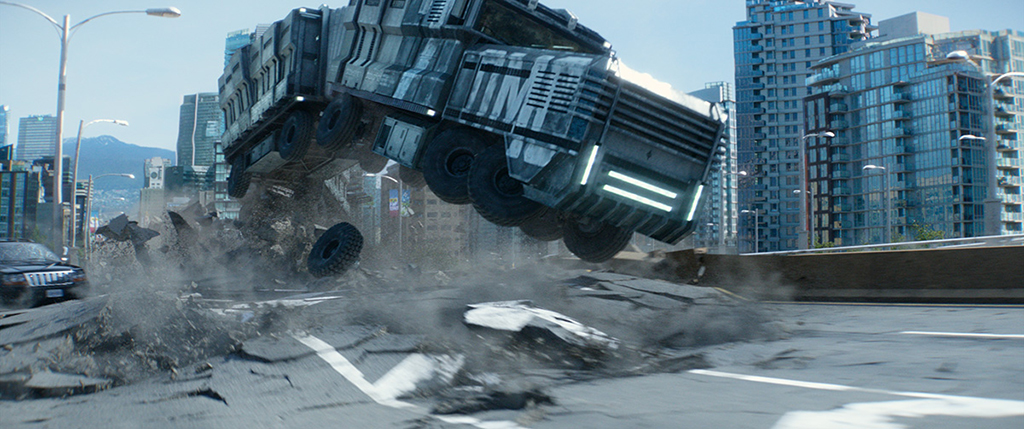
By IAN FAILES

[Caution: Spoilers for Deadpool 2 follow!]
The biggest scene in David Leitch’s Deadpool 2 sees Wade Wilson AKA Deadpool (Ryan Reynolds) and his new mostly-mutant X-Force team parachute in to try and take down a prison-transfer convoy. But in their plans to rescue a new-found friend in Russell Collins/Firefist (Julian Dennison) and save him from Cable (Josh Brolin), the majority of the X-Force actually die, leaving only Deadpool and the very lucky Domino (Zazie Beetz) to attempt the heist.
Their plot is largely unsuccessful – and manages to also free the powerful mutant Juggernaut – but not before the traveling convoy wreaks havoc on the city. The sequence involved practical stunt scenes filmed in Vancouver and on bluescreen stages, plus a wide-ranging CG effort from principal visual effects vendor Double Negative. VFX Voice asked Production VFX Supervisor Dan Glass and DNEG Visual Effects Supervisor Mike Brazelton about the biggest challenges they faced in realizing the convoy sequence.
Simply by staging the sequence during the daytime gave the production several logistical challenges; accessing city streets at nighttime is generally easier and more controllable. Ultimately, scenes were filmed via a few days of main unit shooting and then second unit shoots across weekends.
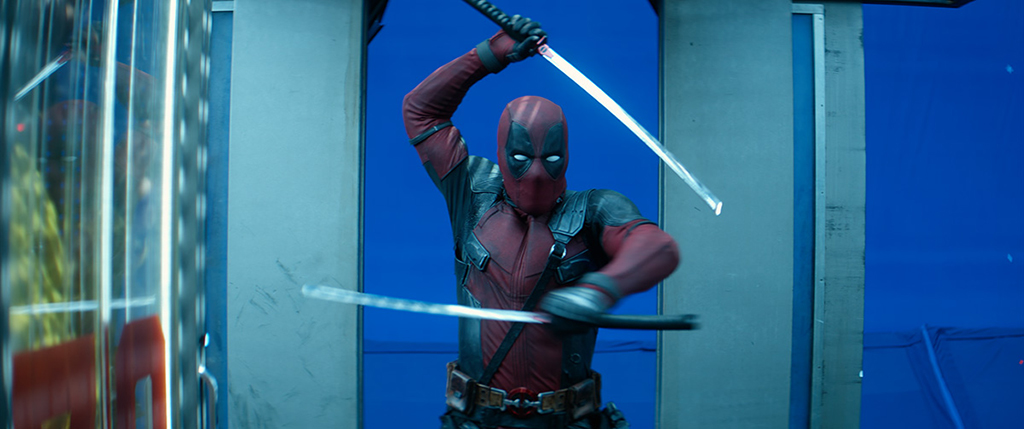
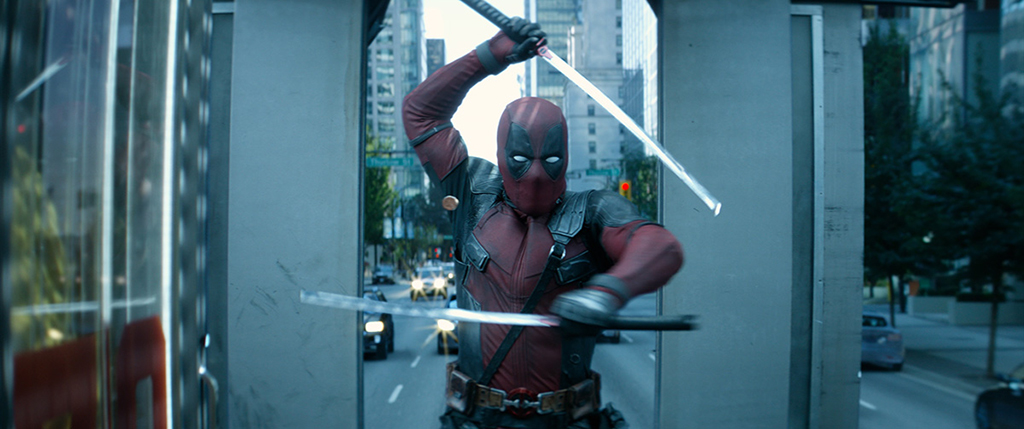
“We were able to scan and photo the vehicles extensively,” says Brazelton. “We had a lot of reference material to match to as the real convoy is used in many scenes. The trailers on the convoy are all identical so we were able to use a lot of work from the hero trailer in the others. We also used a lot of on set photography for the interior.”
—Mike Brazelton, Visual Effects Supervisor, DNEG
“We tried to attempt as much physically and in camera on location in Vancouver, if relevant, or at least in camera on the stage where not,” says Glass. “And we did do one set of ‘stunt smash and grab’ plates that were actually staged out at an airport late in the schedule.”
Since many shots would involve actors on the convoy or other vehicles against bluescreen – as established from previs overseen by Steve Yamamoto at Unit Eleven – an extensive photography shoot of Vancouver was carried out so that Double Negative could mostly work with plates rather than CG or virtual backgrounds.
“We built a six-camera array using Red cameras with Canon L 24mm primes,” outlines Brazelton, who notes the street geography made that somewhat tough to stitch together. “It’s interesting the way the downtown buildings create these pockets of intense light and shadow that made it difficult to get consistently working stretches of footage.”
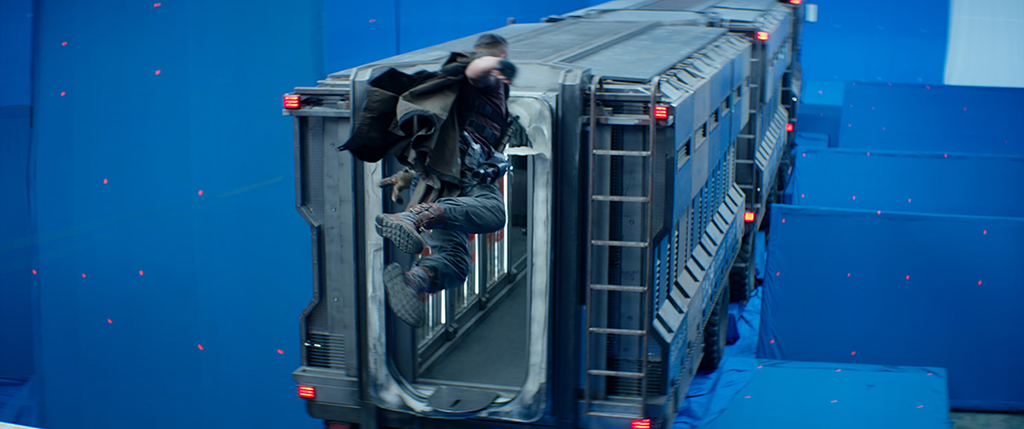
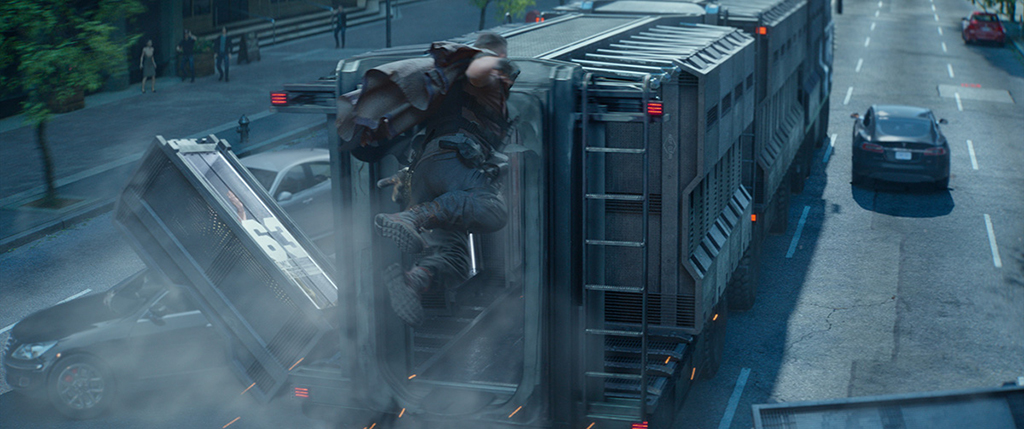
One of the crazier parts of the convoy sequence involves revealing just how lucky Domino is, having declared that as her super power. She survives the parachute in and then somehow avoids a cascade of crashing cars and explosions. “It did take a lot of planning and a lot of storyboards to make sure that we had the pieces and beats represented, and then working with previs and production to make sure that our cameras all move from point to point in the story as Domino keeps avoiding all these things,” says Glass.
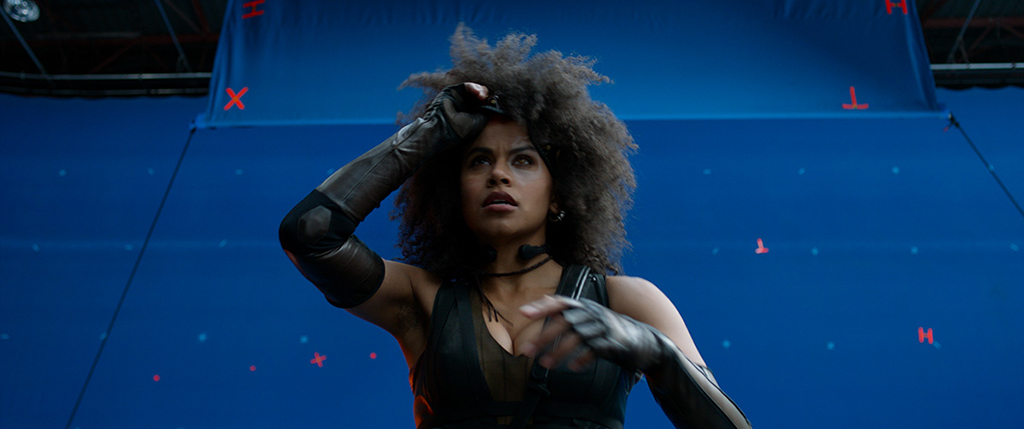
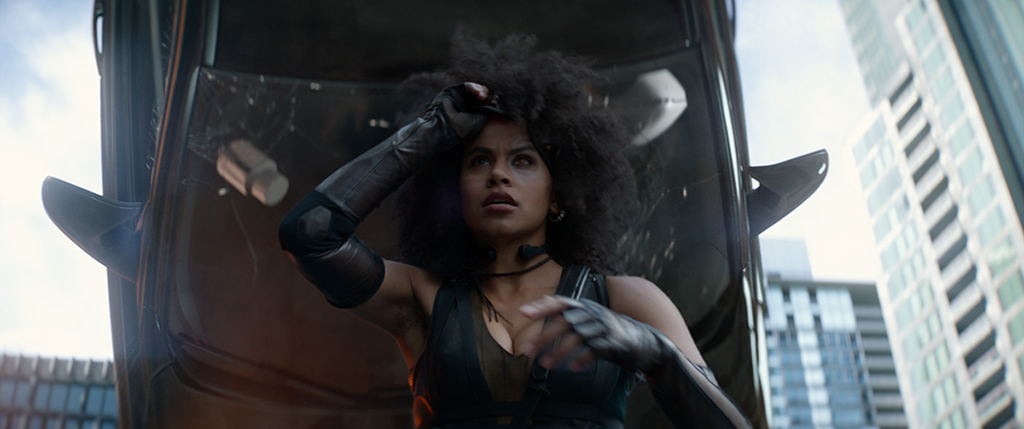
“We had to do re-shoots to film portions of the Domino performance and create a full CG city as the camera continuously rotates around her for over 600 frames. For the moments like the car flipping over her we used N-cam to help guide the performance shoot and it all came together really well. We knew we didn’t have enough time to get the digi-double to hold up that close, so the re-shoots were vital to the realism of the shot.”
—Mike Brazelton, Visual Effects Supervisor, DNEG
“That shot happened very late in the show, we had about 12 weeks to complete it,” adds Brazelton. “We had to do re-shoots to film portions of the Domino performance and create a full CG city as the camera continuously rotates around her for over 600 frames. For the moments like the car flipping over her we used N-cam to help guide the performance shoot and it all came together really well. We knew we didn’t have enough time to get the digi-double to hold up that close, so the re-shoots were vital to the realism of the shot. While we were on set we would get Quicktimes from the DIT tent and do rough comps in Nuke to be sure we had the coverage we needed.”
Later, Domino even survives the catastrophic convoy crash by elegantly landing on a large inflatable panda in a car sales lot. “We tried lots of ideas for how she might survive and land comfortably,” recalls Glass, “including a mattress store. The art department came up with a real inflatable panda that we had on location. We swung a shot bag into the panda from a crane to get the impact feel, and then Domino is a digi-double at one point. We shot her bluescreen for a portion of it and then a drone plate descending towards the panda to connect them all together.”
“We tried lots of ideas for how [Domino] might survive and land comfortably, including a mattress store. The art department came up with a real inflatable panda that we had on location. We swung a shot bag into the panda from a crane to get the impact feel, and then Domino is a digi-double at one point. We shot her bluescreen for a portion of it and then a drone plate descending towards the panda to connect them all together.”
—Dan Glass, Production VFX Supervisor
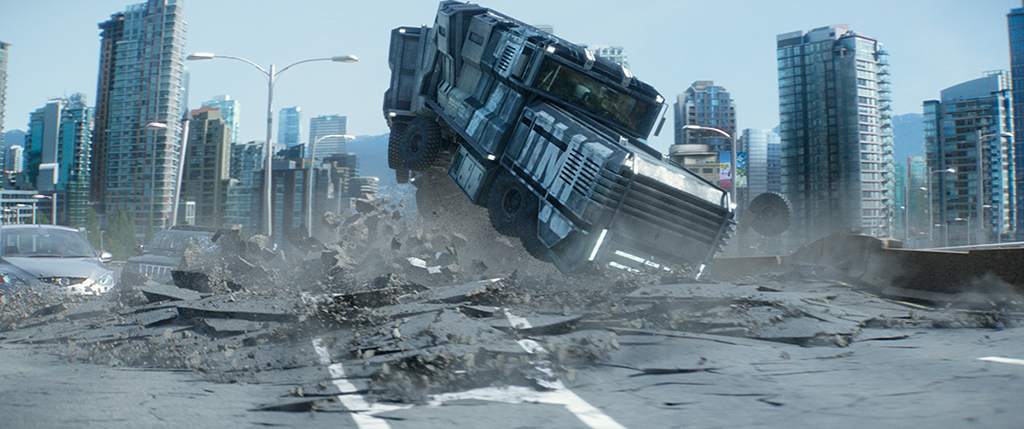
Juggernaut, held captive in a convoy trailer, manages to smash through the floor and set off the collapse of a bridge through which the vehicle and its occupants crash – in slow-motion. The location of the crash was a real one in Vancouver, but most of the destruction and the plight of the convoy was realized digitally.
Double Negative orchestrated the destruction keeping in mind the live-action set piece of the aftermath that had been set-dressed, in order to work out the right amount of chaos. Says Brazelton: “With big scenes like these it’s really important to get the blocking aspects of the shots worked out before you get into the rendering and compositing aspects of it. We started with a layout of the sequence to figure the cameras out, then did the final animation on the approved layouts. From there it was just deciding how much detail we needed to add to make it look as real as possible. We looked at a lot of buildings/bridges collapsing for reference.”
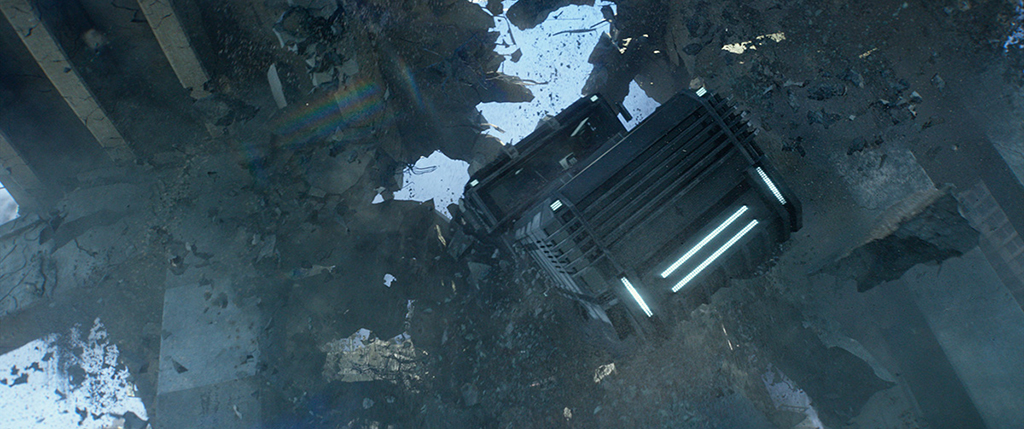
“One of DNEG’s absolute strengths is CG destruction,” adds Glass. “They can do it in their sleep. So they were an obvious choice to be a part of pulling it off. Doing it in slow-mo means you have far more time to pay attention to everything, but there’s a lot less room to hide.”